Kakuni is a beloved dish that holds a special place in the hearts of locals and visitors alike. Featuring succulent braised pork belly simmered in a flavorful broth, Kakuni offers a tantalizing experience for the senses. With its rich, melt-in-your-mouth texture and the harmonious balance of savory and sweet flavors, Kakuni stands as a testament to the depth and complexity of Japanese cuisine. Prepare to be captivated by its delicious allure and discover the unique culinary traditions in Japan.
What is Kakuni?
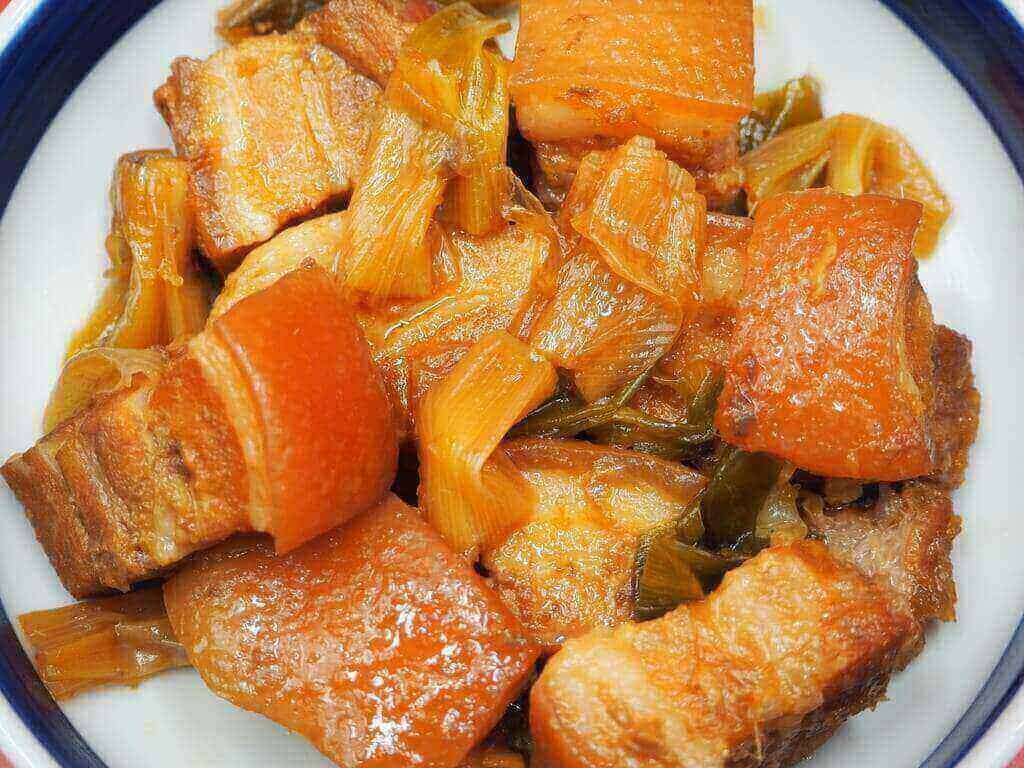
Kakuni, a beloved dish in Japan, features a succulent braised pork belly. While its origins lie in China, Japan has embraced and refined this traditional delight. To create kakuni, pork belly is gently simmered in a fragrant broth until it achieves a tender, melt-in-your-mouth texture. The broth is a harmonious blend of soy sauce, mirin (a sweet rice wine), sugar, sake (Japanese rice wine), ginger, and occasionally, other spices or seasonings. The pork belly is often expertly cut into sizable square or rectangular pieces, then meticulously slow-cooked, allowing the flavours to infuse the meat over an extended period. Locals often served Kakuni as a topping for ramen or as a standalone dish accompanied by rice. Characterized by its rich, melt-in-your-mouth texture and the savory-sweet flavors of the braising liquid. The dish is a popular choice during colder months in Japan.
Kakuni History
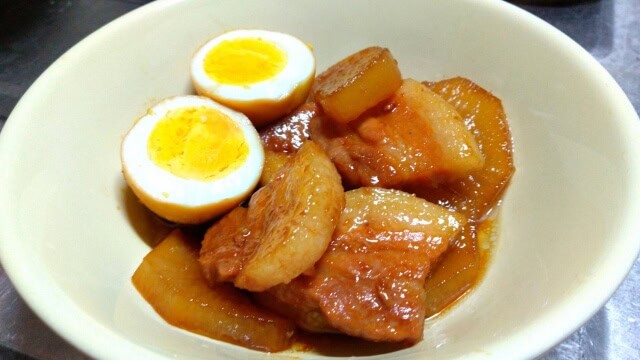
The history of Kakuni in Japan traced back to its origins in China. The dish was brought to Japan during the Tang Dynasty (618-907) through cultural exchanges between the two countries. Kakuni is based on the Chinese dish Tongporou. It is a salty-sweet stew of pork, this dish was an inspiration of Nagasaki’s Toubani = braised pork belly and Okinawa’s Rafute. During the Edo period, Kakuni became increasingly popular in Japan. Locals commonly served this as a dish in high-class establishments and teahouses, enjoyed by samurais, merchants, and the upper class.
The slow cooking process and the use of soy sauce and other traditional Japanese seasonings enhanced the flavors and made it a sought-after delicacy. As Japan entered the Meiji period (1868-1912) and experienced modernization, Kakuni became more accessible to the general public. It evolved from an exclusive dish to one enjoyed by a wider range of people. It gained popularity as a hearty comfort food, particularly during colder months. Today, Kakuni continues to be a beloved and cherished dish in Japan.
Ideal pork cuts for preparing Kakuni
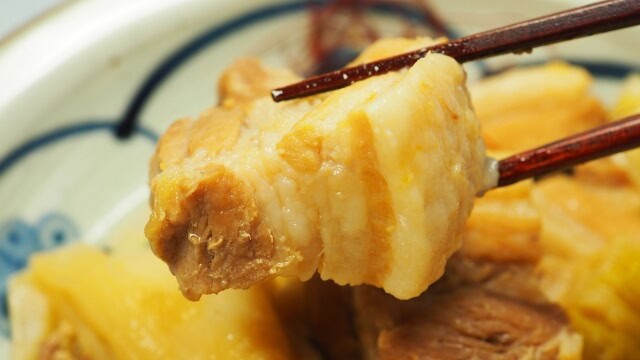
Spareribs
Spareribs are an excellent choice for Kakuni due to their abundant fat content and rich flavor. The meat on spare ribs is exceptionally delicious, making it a highly recommended option for braised dishes and stews.
Shoulder
The shoulder cut offers a well-balanced combination of lean meat and fat, making it versatile and suitable for various cooking methods. When simmered, the pork shoulder releases its collagen, resulting in a wonderfully tender and creamy texture. It complements a wide range of dishes with its delicious qualities.
Thigh
Located in the buttocks region, the thigh is a leaner cut with minimal fat content. It boasts a lighter flavor profile and is considered a healthier option. Additionally, the thigh cut tends to be relatively affordable, making it a wallet-friendly choice for Kakuni preparation.
Difference between Kakuni and Rafute
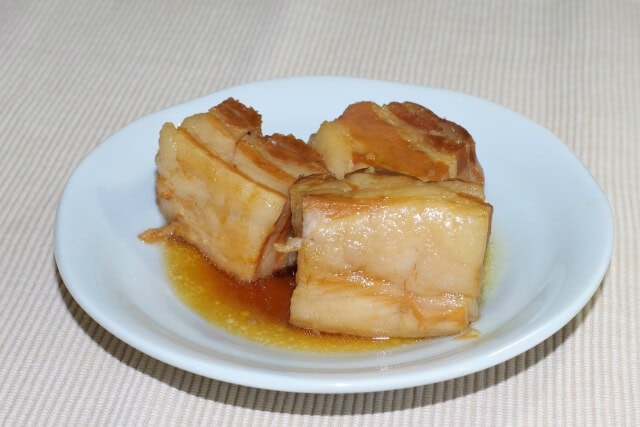
Kakuni and Rafute differ in their cooking techniques, seasonings, and regional variations. Kakuni is prepared by slow-cooking pork belly in a flavorful broth enriched with soy sauce, mirin, sugar, sake, ginger, and other seasonings, resulting in tender and succulent meat. In contrast, Rafute involves simmering pork belly in a mixture of soy sauce, Awamori (a traditional Okinawan liquor), brown sugar, and occasionally ginger or kombu seaweed, with a long-simmering process that yields exceptionally tender and melt-in-your-mouth meat.
While both dishes include soy sauce, Kakuni incorporates a wider range of seasonings such as mirin, sugar, and sake, enhancing its flavors. Rafute, on the other hand, relies more heavily on the distinct combination of soy sauce and Awamori, with brown sugar adding sweetness to the dish. In terms of regional variations, Kakuni is enjoyed throughout Japan and can be savored as a standalone dish or as a delectable topping for ramen. In contrast, Rafute is specific to Okinawa and served as a traditional side dish or a noteworthy component of Okinawan cuisine’s characteristic set menus.
Kakuni vs Tonporo
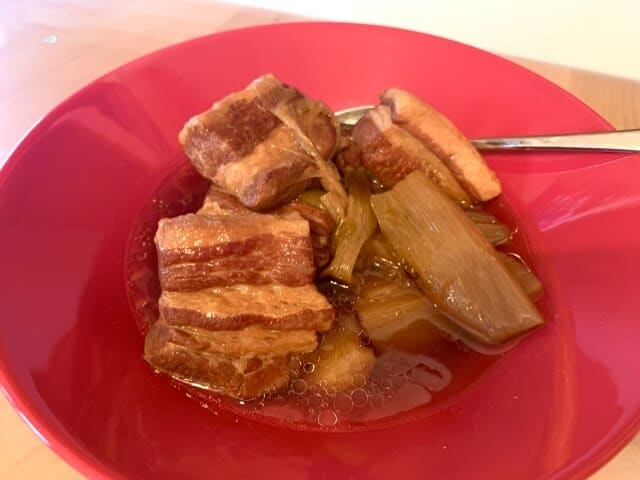
There are several differences between the Chinese-born tonporo and the Japanese-born pork kakuni. Firstly, the type of pork used and the seasoning differ between the two. In Japan, pork kakuni typically uses skinless pork belly, while in China, skin-on pork belly is used in tonporo, allowing for the enjoyment of the soft elasticity of the pork with the skin intact. Additionally, tonporo appears slightly darker than Japanese braised pork due to the use of Shaoxing wine and soy sauce as seasonings, along with the longer stewing time to infuse the flavors deeply. While tonporo has a rich appearance, it has a relatively mild and easy-to-eat taste.
Furthermore, tonporo incorporates spices such as star anise, providing a distinctly Chinese flavor, whereas Japanese kakuni occasionally utilizes ginger but rarely includes special spices. Interestingly, there are similarities between tonporo and certain variations of kakuni in Japan. The Okinawan dish rafute closely resembles tonporo as it incorporates pork skin and made with skin-on pork ribs. In Nagasaki, kakuni is famous as ‘Tobani,’ and its cooking method closely mirrors the authentic preparation of tonporo.
Kakuni FAQ
- How to make delicious kakuni?
-
Locals used skinless pork belly as a convenient alternative to the traditional skin-on version, available at most supermarkets. However, skin-on pork belly can be from butcher shops, commercial supermarkets, or online platforms for an authentic experience. Achieve a crispy texture by pre-boiling the pork and brushing soy sauce on the surface before fragrant frying, ensuring flavorful results and preserving the pork’s shape during cooking.
- Can Kakuni be made using alternative meats instead of pork?
-
While Kakuni traditionally uses pork belly as the main meat, it is possible to experiment with alternative meats for variations on the dish. Some cooks have explored substituting pork with other fatty meats such as beef, duck, tuna, or even tofu as a vegetarian option. These alternative meat choices may result in different flavors and textures compared to the traditional pork-based Kakuni.
Kakuni Recipe
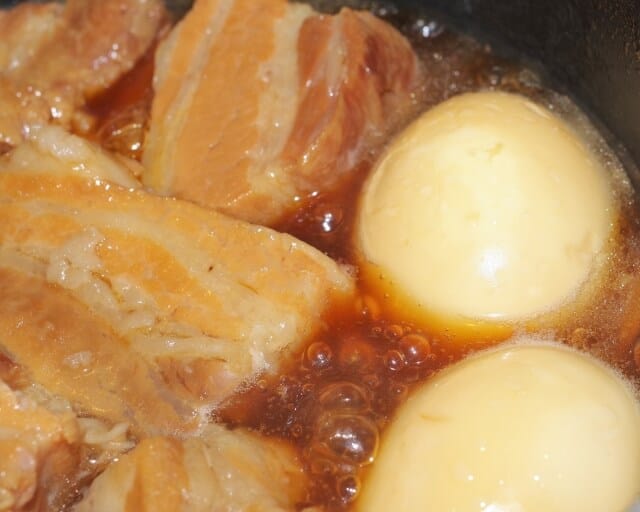
Kakuni Ingredients
| Ingredients of Kakuni for 2 persons | Measurements |
|---|---|
| Pork Belly (Block) | 500g |
| Water (for pre-boiling) | 250g |
| Ginger | 20g |
| Green part of spring onion | 15g |
| Boiled egg | 46g |
| [Broth] Water | 400g |
| [Broth] Soy sauce | 60g |
| [Broth] Cooking sake | 50g |
| [Broth] Sugar | 42g |
How to make Kakuni
Thinly slice the ginger with the skin on. Cut the pork belly into 3 cm wide pieces.
Put water the green part of the green onion, and 1 in a pot and heat it over medium heat until it boils, then remove the scum. Cover and boil for 30 minutes on low heat, then drain in a colander.
In a separate pot, add 3 of the broth ingredients and heat over medium heat. When the pork belly is cooked through, add the boiled egg, cover, and remove from heat.
Let it sit for about 30 minutes, and when the flavors have blended, cut the boiled egg in half and arrange it in a bowl to complete.
Where to buy Kakuni?
Tsukiji Fujimura (築地ふじむら)
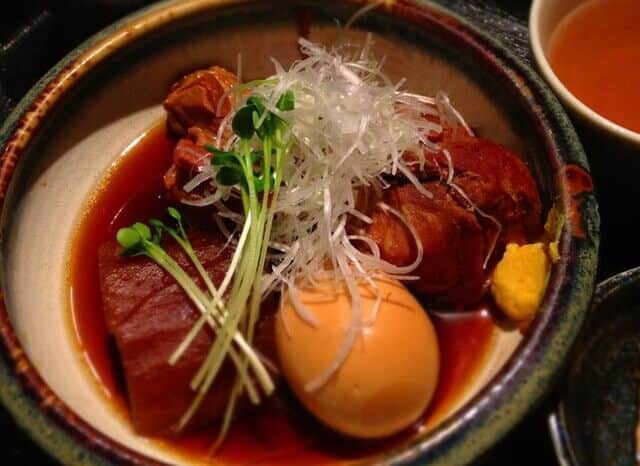
You can enjoy delicious fish dishes at this restaurant, but not only that, but you can also have an exquisite braised pork belly. The pork kakuni that you can enjoy here is so tender that when you put chopsticks with plenty of ginger in them, it will melt away, and the fat is not sticky. The eggs boiled together are also slightly soft-boiled and go well with the sweet broth.
Gohanya Isshin Daikanyama (ごはんや 一芯 代官山)
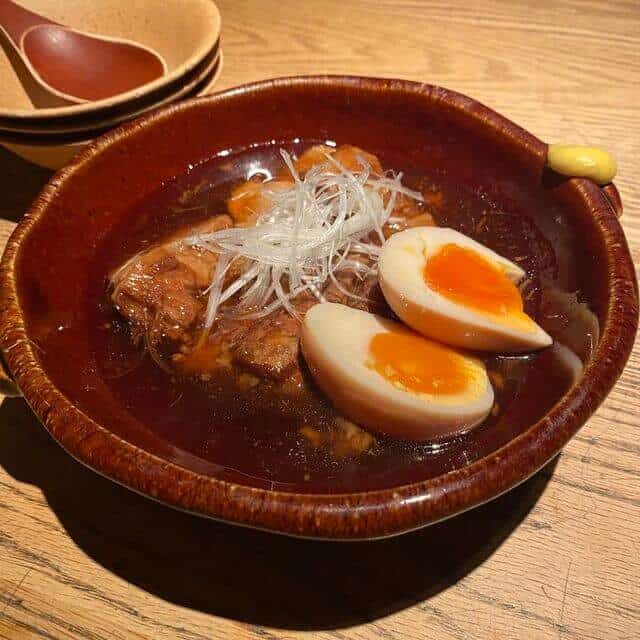
This restaurant is proud of its ohitsumeshi cooked in a triple-baked pot. Their kakuni is a slowly stewed pork kakuni with a soft-boiled egg. As the name suggests, this braised pork belly is thick. The seasoning is just right, and the delicious rice that comes out of the ohitsu alone is many times more delicious.
UOK (旧角煮飯)
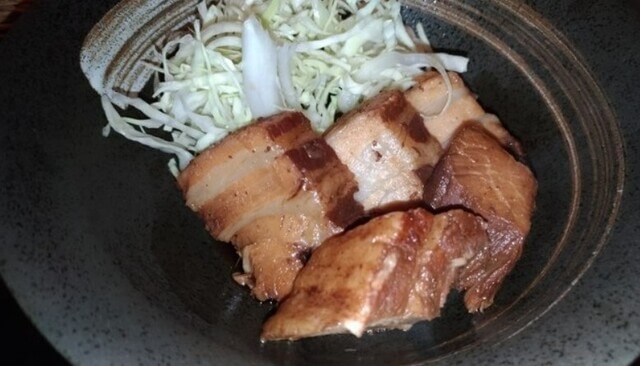
This is a hideaway Japanese restaurant with no signboard. Their pork kakuni is famous by its sweet and salty taste well soaked in thick broth. This sauce goes really well with white rice. Rice is also free, so you can’t help but eat too much. We recommend the mixed set meal that you can eat together with another specialty dish, “offal stew” and braised pork belly, for those who want to eat both.
Takeaway
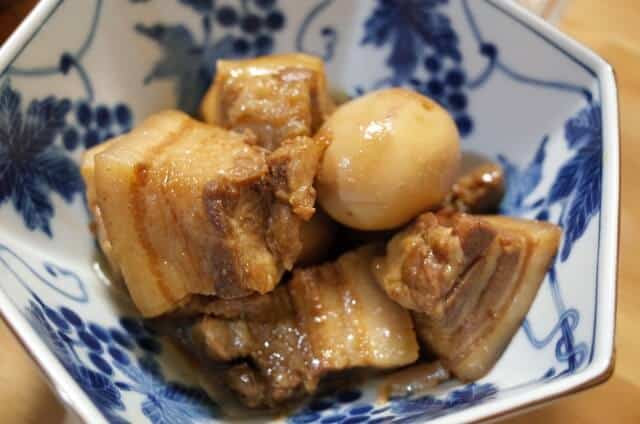
If you find yourself in Japan, trying Kakuni is a culinary experience that should not be missed. This beloved dish represents a harmonious blend of flavors, tender textures, and rich cultural history. Whether you savor it as a topping for ramen or enjoy it as a standalone dish accompanied by rice, Kakuni promises to tantalize your taste buds and provide a comforting and indulgent dining experience. Its popularity throughout Japan speaks volumes about its deliciousness and its status as a cherished comfort food. So, immerse yourself in the world of Kakuni, savor its succulent pork belly, and let the savory-sweet flavors transport you to the heart of Japanese cuisine.
You can check some Japanese pork dishes that we know you would like to try too.
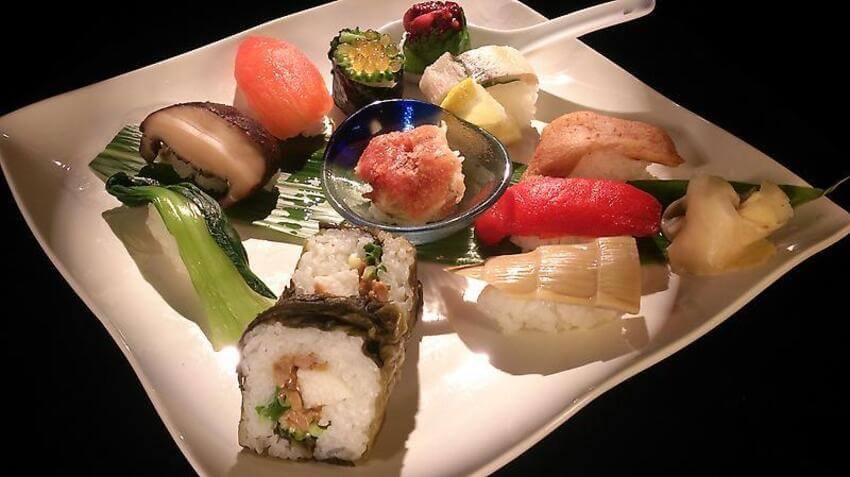





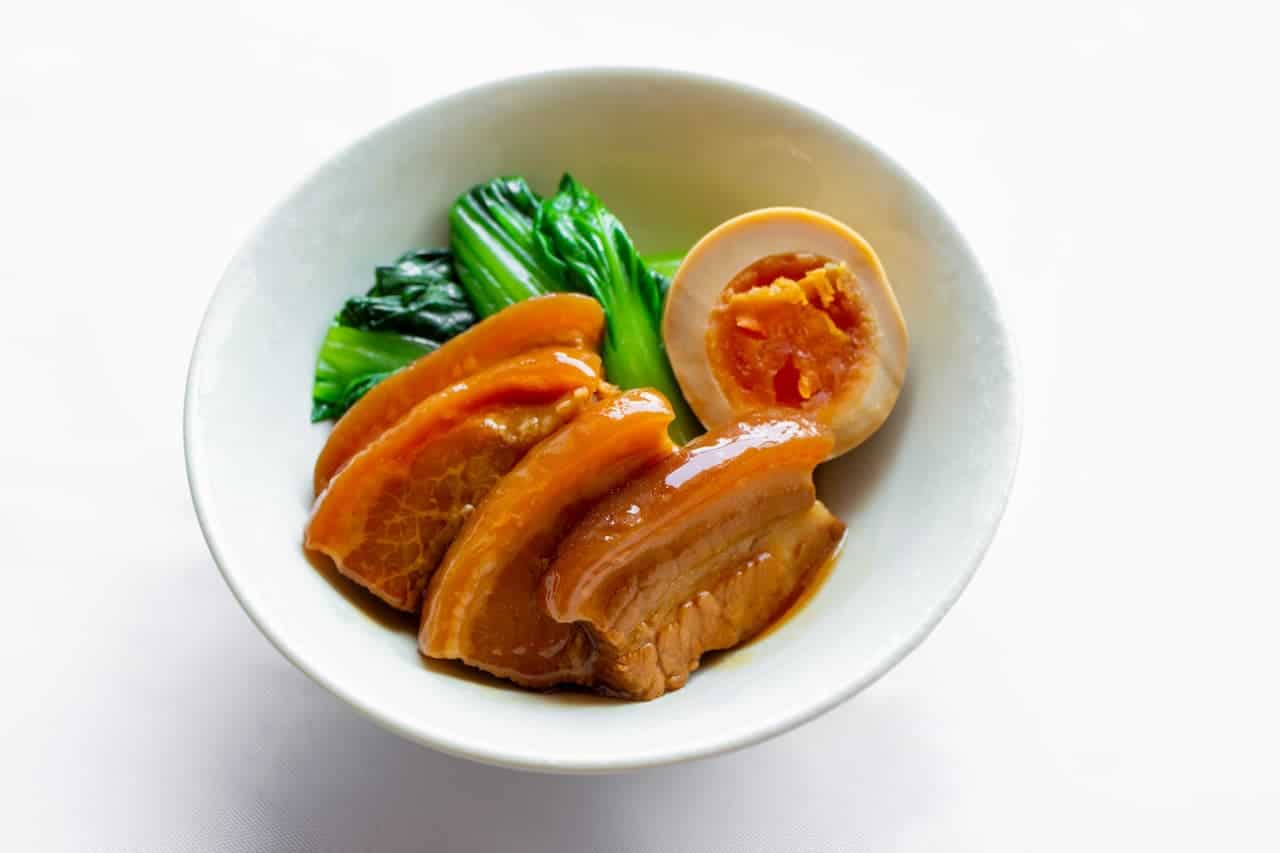
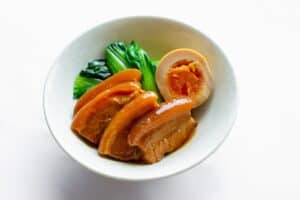
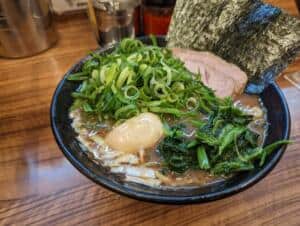
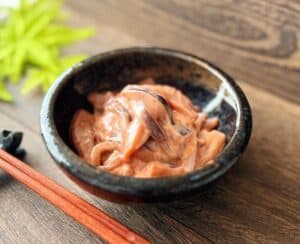

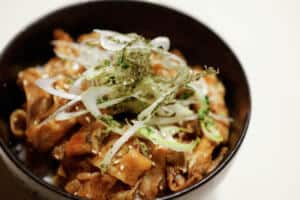
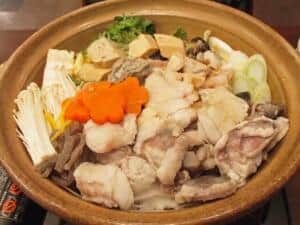

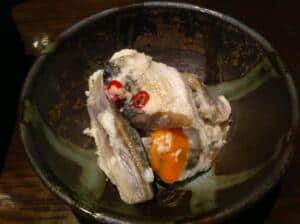

Comments